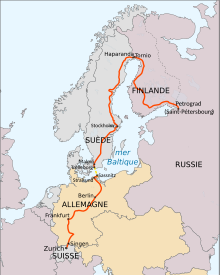
The Treaty of Brest-Litovsk was a separate peace treaty signed on 3 March 1918 between Soviet Russia and the Central Powers, by which Russia withdrew from World War I. The treaty, which followed months of negotiations after the armistice on the Eastern Front in December 1917, was signed at Brest-Litovsk.

The Trans-Siberian Railway, historically known as the Great Siberian Route and often shortened to Transsib, is a large railway system that connects European Russia to the Russian Far East. Spanning a length of over 9,289 kilometers, it is the longest railway line in the world. It runs from the city of Moscow in the west to the city of Vladivostok in the east.
The German minority population in Russia, Ukraine, and the Soviet Union stemmed from several sources and arrived in several waves. Since the second half of the 19th century, as a consequence of the Russification policies and compulsory military service in the Russian Empire, large groups of Germans from Russia emigrated to the Americas, where they founded many towns. In 1914, an estimate put the remaining number of ethnic Germans living in the Russian Empire at 2,416,290. During World War II, ethnic Germans in the Soviet Union were persecuted and many were forcibly resettled to other regions such as Central Asia. In 1989, the Soviet Union declared to have an ethnic German population of roughly 2 million. By 2002, following the collapse of the Soviet Union in 1991, many ethnic Germans had emigrated and the population fell by half to roughly 1 million. 597,212 Germans self-identified as such in the 2002 Russian census, making Germans the fifth-largest ethnic group in the Russian Federation. There were 353,441 Germans in Kazakhstan and 21,472 in Kyrgyzstan (1999); while 33,300 Germans lived in Ukraine.

Emigration is the act of leaving a resident country or place of residence with the intent to settle elsewhere. Conversely, immigration describes the movement of people into one country from another. A migrant emigrates from their old country, and immigrates to their new country. Thus, both emigration and immigration describe migration, but from different countries' perspectives.
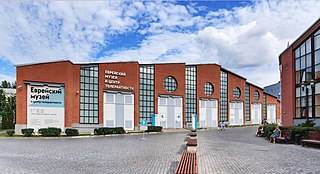
The history of the Jews in Russia and areas historically connected with it goes back at least 1,500 years. Jews in Russia have historically constituted a large religious and ethnic diaspora; the Russian Empire at one time hosted the largest population of Jews in the world. Within these territories, the primarily Ashkenazi Jewish communities of many different areas flourished and developed many of modern Judaism's most distinctive theological and cultural traditions, while also facing periods of antisemitic discriminatory policies and persecution, including violent pogroms. Some have described a "renaissance" in the Jewish community inside Russia since the beginning of the 21st century; however, the Russian Jewish population has experienced precipitous decline since the dissolution of the USSR which continues to this day, although it is still among the largest in Europe.

Egon Rudi Ernst Krenz is a German former politician who was the last Communist leader of the German Democratic Republic during the Revolutions of 1989. He succeeded Erich Honecker as the General Secretary of the ruling Socialist Unity Party of Germany (SED) but was forced to resign only weeks later when the Berlin Wall fell.
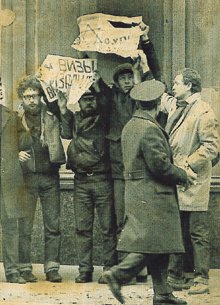
Refusenik was an unofficial term for individuals—typically, but not exclusively, Soviet Jews—who were denied permission to emigrate, primarily to Israel, by the authorities of the Soviet Union and other countries of the Soviet Bloc. The term refusenik is derived from the "refusal" handed down to a prospective emigrant from the Soviet authorities.

The history of the Jews in Germany goes back at least to the year 321, and continued through the Early Middle Ages and High Middle Ages when Jewish immigrants founded the Ashkenazi Jewish community. The community survived under Charlemagne, but suffered during the Crusades. Accusations of well poisoning during the Black Death (1346–53) led to mass slaughter of German Jews, while others fled in large numbers to Poland. The Jewish communities of the cities of Mainz, Speyer and Worms became the center of Jewish life during medieval times. "This was a golden age as area bishops protected the Jews, resulting in increased trade and prosperity."

HIAS is a Jewish American nonprofit organization that provides humanitarian aid and assistance to refugees. It was established on November 27, 1881, originally to help the large number of Russian Jewish immigrants to the United States who had left Europe to escape antisemitic persecution and violence. In 1975, the State Department asked HIAS to aid in resettling 3,600 Vietnam refugees. Since that time, the organization continues to provide support for refugees of all nationalities, religions, and ethnic origins. The organization works with people whose lives and freedom are believed to be at risk due to war, persecution, or violence. HIAS has offices in the United States and across Latin America, Europe, Africa, and the Middle East. Since its inception, HIAS has helped resettle more than 4.5 million people.
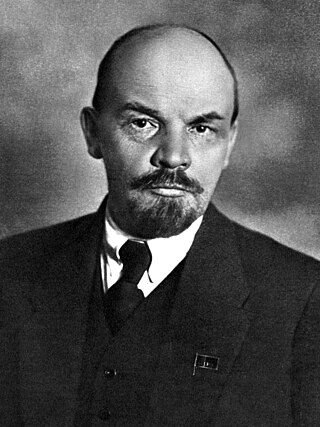
Vladimir Ilyich Ulyanov, better known as Vladimir Lenin, was a Russian revolutionary, politician, and political theorist. He served as the first and founding head of government of Soviet Russia from 1917 until his death in 1924, and of the Soviet Union from 1922 to 1924. Under his administration, Russia, and later the Soviet Union, became a one-party socialist state governed by the Communist Party. Ideologically a Marxist, his developments to the ideology are called Leninism.
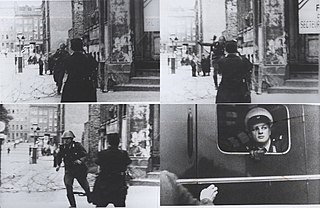
After World War II, emigration restrictions were imposed by countries in the Eastern Bloc, which consisted of the Soviet Union and its satellite states in Central and Eastern Europe. Legal emigration was in most cases only possible in order to reunite families or to allow members of minority ethnic groups to return to their homelands.

Vladimir Davidovich Medem, né Grinberg, was a Russian Jewish politician and ideologue of the Jewish Labour Bund. The Medem Library in Paris, the largest European Yiddish institution, bears his name.
The February Revolution in Russia officially ended a centuries-old regime of antisemitism in the Russian Empire, legally abolishing the Pale of Settlement. However, the previous legacy of antisemitism was continued and furthered by the Soviet state, especially under Joseph Stalin. After 1948, antisemitism reached new heights in the Soviet Union, especially during the anti-cosmopolitan campaign, in which numerous Yiddish-writing poets, writers, painters and sculptors were arrested or killed. This campaign culminated in the so-called Doctors' plot, in which a group of doctors were subjected to a show trial for supposedly having plotted to assassinate Stalin. Although repression eased after Stalin's death, persecution of Jews would continue until the late 1980s.

The Schoenau ultimatum was a hostage-taking incident in Marchegg, Austria by the Palestinian militant group As-Sa'iqa in 1973. At the time Vienna was a transit point for Russian Jews, the largest population of Jews remaining in Europe. The Schoenau ultimatum focused attention away from Egyptian and Syrian military build-up and their planned attack that would come to be known as the Yom Kippur War.

Alexander Lvovich Parvus, born Israel Lazarevich Gelfand and sometimes called Helphand in the literature on the Russian Revolution, was a Marxist theoretician, publicist, and controversial activist in the Social Democratic Party of Germany.
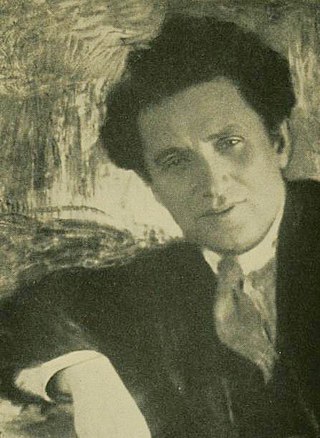
Grigory Yevseyevich Zinoviev was a Russian revolutionary and Soviet politician. An Old Bolshevik, Zinoviev was a prominent figure in the leadership of the early Soviet Union and served as chairman of the Communist International (Comintern) from 1919 to 1926.

Julius Martov or L. Martov was a Russian politician, revolutionary and the leader of the Mensheviks, a faction of the Russian Social Democratic Labour Party (RSDLP). A close associate of Vladimir Lenin, Martov broke with him following the RSDLP ideological split, after which Lenin led the opposing faction, the Bolsheviks.
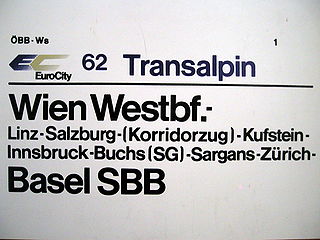
Privileged transit traffic or corridor traffic is traffic of one country across the territory of another country without usual customs and passport checks. The corresponding line of communication is called the (privileged) traffic corridor and a train used in this kind of transit is called a corridor train. The reason for such arrangements is usually border changes or border creation which cut through an existing transport corridor.

Emigration of Jews from Nazi Germany and German-occupied Europe started after Adolf Hitler came into power in 1933.
Lenin... The Train is a 1988 English-language TV miniseries directed by Damiano Damiani. Produced by Rai 2 and Taurus Film in collaboration with Österreichischer Rundfunk (ORF), Zweites Deutsches Fernsehen (ZDF) and Televisión Española (TVE), it premiered on 30 November on Rai 2. It follows Vladimir Lenin on his journey from Switzerland to Petrograd by sealed train through wartime Germany during the Russian Revolution of 1917.
